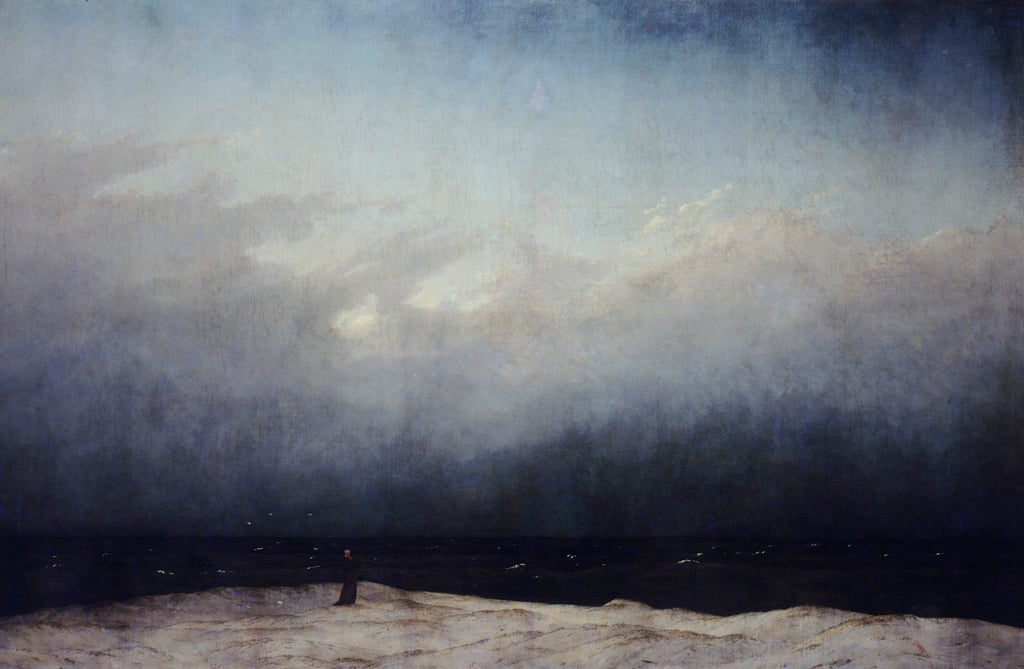Chinese artist Mao Yan explains German landscape artist Caspar David Friedrich’s influence on his style
- Celebrated portrait artist Mao Yan, who had a painting sell for US$3.16 million in 2020, talks about being intimidated by Friedrich’s The Monk of the Sea
- Mao works from photos and has a distinctive style, often using shades of grey and the sfumato style of blending tones. He recently started painting landscapes

When Mao Yan was a student at the Central Academy of Fine Arts, in Beijing, in the late 1980s, he chanced upon a photograph of The Monk by the Sea, a painting by the German artist Caspar David Friedrich from around 1810. Mao marvelled at its moody palette of blues and greys, especially the hazy band where the two colours met on the horizon.
He was simultaneously impressed and intimidated, so much so that he promised himself on the spot that he would never make landscape paintings. “That painting is transcendent. If I couldn’t reach that level, there was no point,” Mao says.
So Mao became a portraitist – a celebrated one. His paintings have been exhibited around the world, collected by major museums, including Hong Kong’s M+, and sell for eight figures at auction.
In December 2020, China Guardian auction house in Beijing sold his painting Black Rose of Memory or Dancing for 20.7 million yuan (just over HK$23 million, or US$3.16 million).

Late last year, Mao had his largest exhibition to date at the Song Art Museum in Beijing and, on January 18, opened a show of new works at the London outpost of Pace Gallery, the global mega-gallery that represents him. That exhibition, New Paintings, runs until March 9.